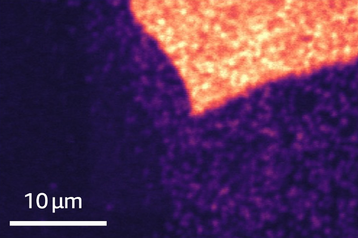De Beers will make artificial diamonds for use in quantum computers being developed by Amazon Web Services (AWS), according to reports.
The De Beers subsidiary Element Six will make artificial diamonds to be used by the AWS Center for Quantum Networking which opened in 2022, to develop quantum communications, according to an AWS blog.
Quantum networks distribute "entanglement", the phenomenon which ties the behavior of particles together when they are separated. This can improve the security of networks because it makes it impossible for hackers to read data from a network without being detected. It also allows data centers to synchronize classical computers and enables quantum computers to communicate quantum states, potentially allowing distributed quantum computing.
Quantum effects normally operate at short range, so quantum networking needs "quantum repeaters" to enable entanglement to be distributed over significant distances. They also require operations to be carried out on single photons of light, at hitherto-impossible levels of timing synchronization.
AWS believes that artificial diamonds can enable quantum repeaters that will support production-grade quantum networks.
Quantum bits, or qubits, can be built from different technologies, with most of the leading quantum computers being based around superconductors. AWS scientists believe that a rival qubit scheme, based around color defects in diamond, will be a better basis for quantum repeaters, because it operates with photons - which are the basic unit of communication along fiber optic networks.
These qubits, based on color centers in diamond, are called "defect qubits", the blog explains.
Defects have their uses
"Defects in solids are a wide class of qubits which consist of one or more atoms forming a defect inside an otherwise uniform, crystalline material," say the authors, Dr. Bart Machielse and Dr. Daniel Riedel from AWS, and Dr. Daniel Twitchen from Element Six. "Depending on the type of atom and material used, the qubit is defined from the electronic or magnetic states of the defect atom(s)."
Diamonds consist of a rigid lattice of carbon atoms, but defects, containing impurity atoms, change the way they interact with light photons. This gives diamond gemstones their distinctive colors - but the photon effects can also enable quantum repeaters.
Nitrogen-Vacancy Center (NV) and Silicon-Vacancy Center (SiV) defects replace carbon atoms with nitrogen and silicon respectively. These are color centers, but their atoms also have a "spin memory" as a magnetic field can align the "spin" of the defect, making it a quantum memory device, with a value of 1 or 0. Photons can flip the spin alignment, changing the value of the qubit.
Because they are in diamond, NV and SiV color centers are more robust than other qubits and can potentially be built into deployable nanoscale networking devices. SiV defects, in particular, are not sensitive to background magnetic and electric fluctuations, making them particularly useful as they can be reliably written and read. The qubit also has a comparatively long "coherence time" of up to 10 milliseconds, and a nuclear spin memory of more than a second.
Element Six has been working to create artificial diamonds with controlled defects, which have been used by Harvard and MIT scientists in quantum communication experiments, leading towards quantum repeaters. The company believes such diamonds can be mass-produced in future.
"Diamond’s optical and quantum properties make it uniquely promising for quantum networking and quantum communications applications," say the authors, "but lack of widespread access to different grades and morphologies of diamond has long been a challenge for the field. Element Six and AWS are working together to develop new technologies to make diamond a more flexible and accessible material – helping drive growth and progress for this technology."


